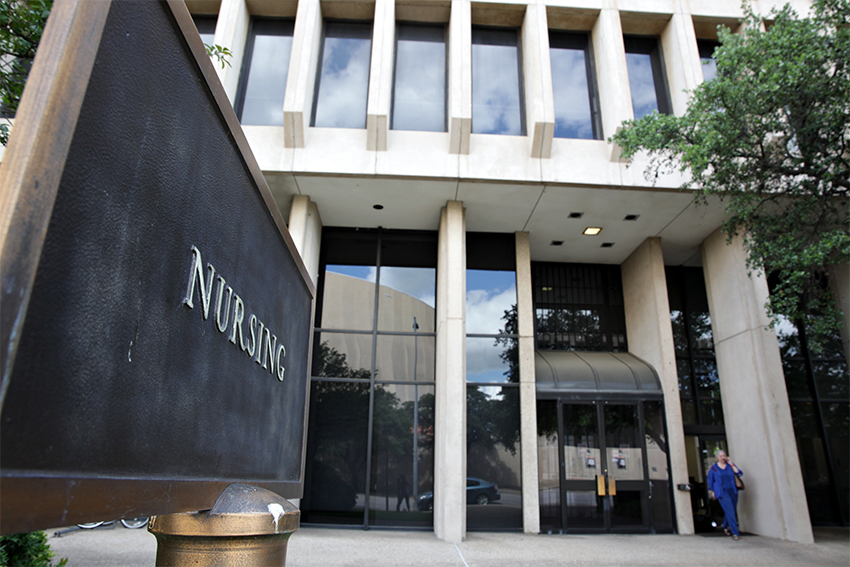The School of Nursing is being renovated this summer to modernize the 1970s-era building, which contains decades-old seats and extremely outdated technologies.
The school is one of the nation’s leading nursing schools, but its outdated classrooms fail to match its advanced academics and cutting-edge research.
“I feel as though we are behind most of the campus when it comes to simple things such as accessibility to proper everyday necessities,” nursing senior Richard Lyttle said.
Rob Bacchus, director of development for the nursing school, said that there are only about three electrical outlets in the first floor classrooms, where the renovations are taking place.
Bacchus said the inefficient and outdated space was not helping the students learn or the teachers teach to their full capabilities.
“This renovation will allow for more dynamic and flexible group work,” Bacchus said.
The school set forth a plan in 2014 to develop an upgraded site. The $3.3 million project is just now starting because all the funding for it is in place. In December 2016, the St. David’s Foundation awarded the school a $950,000 grant to update its classrooms and technologies, which helped set the $3.3 million project in motion this summer.
“With this grant, we intend to update classrooms so that the latest innovative teaching techniques can be used and students can participate in active learning and team-building activities,” said Alexa Stuifbergen, dean of the School of Nursing.
The school’s advisory council, which consists of a group of alumni, friends and donors, came together to raise additional funds to make this project possible.
“Our community has rallied behind this initiative,” Stuifbergen said. “We are incredibly grateful for the support of St. David’s Foundation and everyone who has contributed.”
Lyttle said that the nursing school’s lecture halls have seats that are bolted into the ground and creak when the students make the slightest of moves, inconveniences that he said the renovations will help address.
“It will create a more cohesive environment, inevitably allowing for a greater diffusion of information and hopefully better test scores and satisfaction among students,” Lyttle said.
The classrooms are expected to be ready for the fall semester.




















